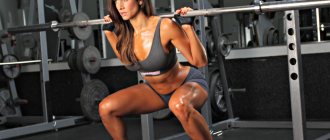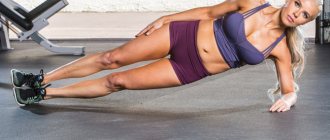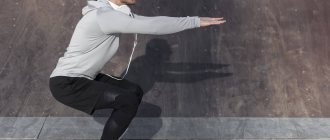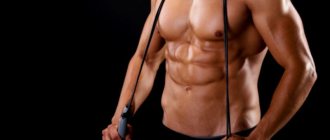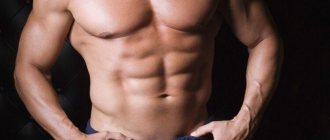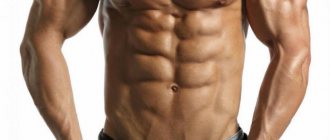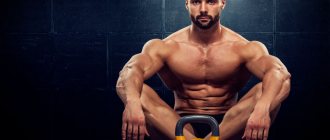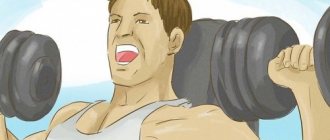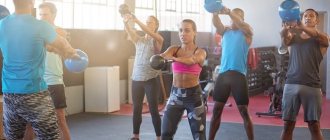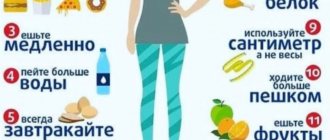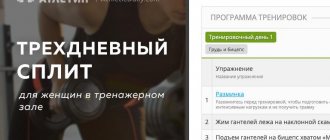Monthly training plan
Do your workouts every other day; this will be the best option for your body. First, do a warm-up: light running in place, bending your torso to the right and left, squats (10-15 times) and freely swinging your arms.
Photo: istockphoto.com
It's time for the main training. At first, do the exercises in 2-3 sets of 10-20 repetitions, the pause between sets should not exceed two minutes. Gradually you should increase the load.
What is a weight loss program
Anyone who wants to get rid of extra pounds should know that a weight loss program is a comprehensive approach that includes a specific training schedule and an optimal diet. To make a figure slim and athletic, it is necessary to develop an individual scheme based on already known complexes. To achieve the necessary weight loss, you must have a specific plan of action, so select exercises, create a schedule, adjust the menu and be sure to record your results.
Monthly schedule
A nutrition and training program for weight loss involves developing a specific schedule for a certain period, for example, a month. Create a training schedule - it is best to do it every other day, but not more often. If you increase the intensity of your cardio, aerobic or strength training, your body will not have time to recover. The duration of training should be at least 45 minus, but no more than 1.5 hours. This is enough to start the fat burning process.
How to make a plan
Before you go on a crash diet or join a gym, create a personalized weight loss routine. The result of any activity largely depends on a clearly defined goal and a pre-drawn plan for achieving it. The process aimed at losing weight is no exception. To create an effective plan you will need:
- determine deadlines;
- distributor of number of meals;
- clearly think through your nutrition plan;
- develop an individual training set.
First week
Press pumping unit
1. Classic sit-ups - 2 sets of 20 reps.
Watch the video on the official Hi Energy channel.
Starting position: lying on your back. Place your hands behind your head or on your chest. Spread your elbows to the sides. Bend your legs slightly at the knees at an angle of 45–60 degrees and lift them above the floor. Now start raising your head. Stretch your chin towards your chest. Reach the highest possible point for you and return to the starting position.
2. Side plank - 2 sets, 30 seconds on each side.
Watch the video on the official TOP TEAM SCHOOL channel.
Lie on your side, lean on your elbow. Then lift the body so that you get an absolutely straight line without sagging or protruding parts. At the same time, you should not feel pain, only tension. You need to perform the exercise on each hand in turn.
3. Crunches - 2 sets, 10 reps.
Lie on the floor with your knees slightly bent. Slowly lift your body and begin twisting first in one direction, then in the other. Try to touch your elbow to the opposite knee. At the bottom point, do not lie completely on your back. Stay two centimeters from the floor. Hold it behind your head.
4. Boat - 2 sets, 10 reps.
Lying on your stomach, lift your chest and extended legs as high as you can. At this time, the hands lie along the body. Then stretch your arms forward and maintain this position for five deep breaths. Place your hands behind your back, grab your ankles and try to rock back and forth a little.
Buttocks and thighs pumping block
1. Hip raises - 2 sets, 10 reps.
Lie on your back, bend your knees, and place your arms along your body, palms down. As you exhale, lift your hips up to the highest possible point. You need to fixate at this point for a few seconds. Your back should remain straight. As you inhale, slowly return to the starting position.
2. Backward leg swings - 2 sets, 20 reps on each leg.
Get on your knees and place your forearms on the floor. The back is straight, slightly arched at the lower back, looking forward. Next, inhale and take one leg back, fixing it at the top point for a few seconds. As you exhale, return to the starting position.
3. Hip adduction - 2 sets, 20 reps on each leg.
Lie on your right side, rest your right hand on the floor, place your left hand on your waist or on the floor. The right leg is straight, the left is bent at an angle of 90 degrees. Pull the toe of your right foot towards you and lift it to the highest possible point. Then return your leg to its original position.
4. Squats - 3 sets, 15 reps.
Stand straight, feet shoulder-width apart, arms extended forward. Slowly start squatting. Lower your buttocks as if there was a chair behind you to sit on, that is, to the level when your thighs are parallel to the floor. Now rise slowly, controlling every movement.
Arm muscle tightening block
1. Single leg push-ups - 2 sets, 10 reps.
Get on your knees. Get into a prone position with your hands under your upper chest. The distance between the palms should be slightly wider than shoulder width. From the bottom point, begin to lift your body, leaning on your hands and knees, but at the same time keep your leg suspended and pull it up. The abs and buttocks are tense. If it’s difficult, you can do push-ups with your knees bent.
2. Rock climber - 2 sets, 10 reps.
Do a plank. The body should be a kind of straight line, the abs and buttocks should be tense. Bend your right leg at the knee and pull it towards your chest. Press your toe into the floor, then return your leg to the starting position. Repeat the same with the other leg.
Emphasis on the bar. Pumping up your abs for summer
We tell you how to achieve an ideal figure, leaving only one exercise in your workout.
Stretch block
1. Butterfly - 3 sets, 10 reps.
Sit on the floor, bend your knees and press one foot to the other. Spread your knees to the sides and place your palms on them. Using gentle pressure, press your knees toward the floor, trying to achieve full contact along the entire outer surface of your legs. Hold for 10-15 seconds and release the pressure.
2. Pharaoh - 3 sets, 30 seconds on each side.
Sit on the mat, stretch your right leg in front of you, bend your left at the knee and throw it behind your right. Then turn your torso to the left and rest the elbow of your right hand on the knee of your left leg. Hold this position for several seconds.
3. Cat - 2 sets, 10 reps.
Get on all fours, hunching as hard as you can. Maintain this position for 15 seconds. Then arch your back and look up. Stay in this position for 15 seconds.
4. Roll on your back - 15 times minimum.
Lying on your back with your legs bent, try to touch your chin to your knees and your knees to your chin. At the same time, swing, clasping your legs with your hands.
Photo: istockphoto.com
Diet
The diet you follow while training is a key factor in fat loss. All efforts will be useless if you take in excess calories (especially from inappropriate sources such as sugar).
Use the following calculator to determine your daily calorie and macronutrient needs:
Calorie calculator
In addition to a calorie deficit, a fat-burning diet must meet the following requirements:
- high protein content (2-4 g per kilogram of body weight);
- low to moderate amounts of carbohydrates (low on rest days, moderate on training days);
- high content of essential fatty acids (EFA);
- as little sugar as possible;
- no carbohydrates after 18:00.
By following such a diet, you force your body to burn fat rather than muscle mass. By alternating the level of carbohydrate intake, you give the body the required amount of carbohydrates on training days, and reduce them on rest days.
A large amount of protein helps keep the body in an anabolic state and prevent it from becoming catabolic. EFAs are needed because you will be taking in fewer carbohydrates than usual. They will give you energy and allow your metabolism to function optimally. The last thing you want on this diet is a slow metabolism.
Sugar is mostly stored as fat, so you should avoid it at all costs. Consuming sugars is beneficial after workouts, when the insulin surge will serve you well. One of the main conditions of this diet is the exclusion of carbohydrates after 18:00. This allows the body to reduce glycogen stores while you sleep.
When you wake up and start doing cardio, your body will use fat as an energy source because there will be either no or very little glycogen left.
Second and third weeks
Press pumping unit
| Classic sit-ups | 3 sets, 30 reps |
| Side plank | 3 sets, 60 seconds each side |
| Crunches | 3 sets, 20 reps |
| boat | 3 sets, 20 reps |
Buttocks and thighs pumping block
| Pelvic lifts | 4 sets, 20 reps |
| Swing your legs back | 3 sets, 30 reps per leg |
| Hip adduction | 3 sets, 30 reps per leg |
| Squats | 3 sets, 30 reps |
Arm muscle tightening block
| One leg push ups | 3 sets, 10 reps |
| Rock climber | 3 sets, 10 reps |
Stretch block
| Butterfly | 3 sets, 20 reps |
| Pharaoh | 3 sets, 60 seconds each side |
| Cat | 3 sets, 15 reps |
| piggy back ride | 25 times minimum |
What kind of workout should you do to burn fat?
- Heavy
- Intensive and with a consistently distributed weekly load
- Complex with work on the whole body in a week
Heavy sets of 8-12 reps will put more stress on the muscle fibers. This, in turn, will damage them more, compared to lighter weights and 15 reps. Your central nervous system takes over and your entire body is mobilized. All this forces your body to work harder and literally gives you an adrenaline rush.
You must train without remaining in a training plateau. The body must be put to the test, forcing it to respond and develop. Try to increase your working weight every week, even if it is only 2 kg; but not only in squats and deadlifts, but also in biceps curls and arm extensions on a block.
Wide grip lat pulldown to chest
Complex workouts help you work many parts of your body in a short period of time. Greater stimulation of muscle fibers helps the body respond better. Combined with the right diet, this can be a great workout refresher for those who use standard splits that focus on working 2 body parts in one workout.
This puts a greater shock load on the body, which raises your metabolic rate and allows you to burn more fat daily. You spend less time in the gym and work more muscle groups.
The program is simple and straightforward (change something if you want). Keep in mind that these workouts work many muscle groups, so you must have good experience doing them.
Fourth week
Press pumping unit
| Classic sit-ups | 4 sets, 30 reps |
| Side plank | 4 sets, 90 seconds each side |
| Crunches | 4 sets, 20 reps |
| boat | 4 sets, 20 reps |
Buttocks and thighs pumping block
| Pelvic lifts | 4 sets, 30 reps |
| Swing your legs back | 4 sets, 30 reps per leg |
| Hip adduction | 4 sets, 30 reps per leg |
| Squats | 4 sets, 35 reps |
Arm muscle tightening block
| One leg push ups | 4 sets, 10 reps |
| Rock climber | 4 sets, 10 reps |
Stretch block
| Butterfly | 4 sets, 20 reps |
| Pharaoh | 4 sets, 60 seconds each side |
| Cat | 4 sets, 15 reps |
| piggy back ride | 35 times minimum |
How to eat to lose weight?
When visiting the gym to lose weight, it is not at all necessary to follow a grueling diet plan or go hungry. The menu should remain balanced and varied; you just need to limit the intake of fats and fast carbohydrates.
The basic principles of nutrition for weight loss are as follows:
- Proteins must continue to be supplied in sufficient quantities, otherwise muscle breakdown, hormonal imbalance and other problems may occur. Their main sources will be: lean meats, dairy products, seafood, lean fish, legumes, eggs. Proteins should make up 30% of the diet; if necessary, you can use sports nutrition by consuming protein mixtures.
- The intake of fats must be limited, but they should still make up 10-15% of the diet so that the functioning of the body is not disrupted. Their main sources will be seafood, fish and vegetable oil.
- Carbohydrates make up 70% of the diet; they will be supplied to the body by consuming fresh fruits and vegetables, cereals and wholemeal bread.
- It is recommended to completely exclude starch and sugar
